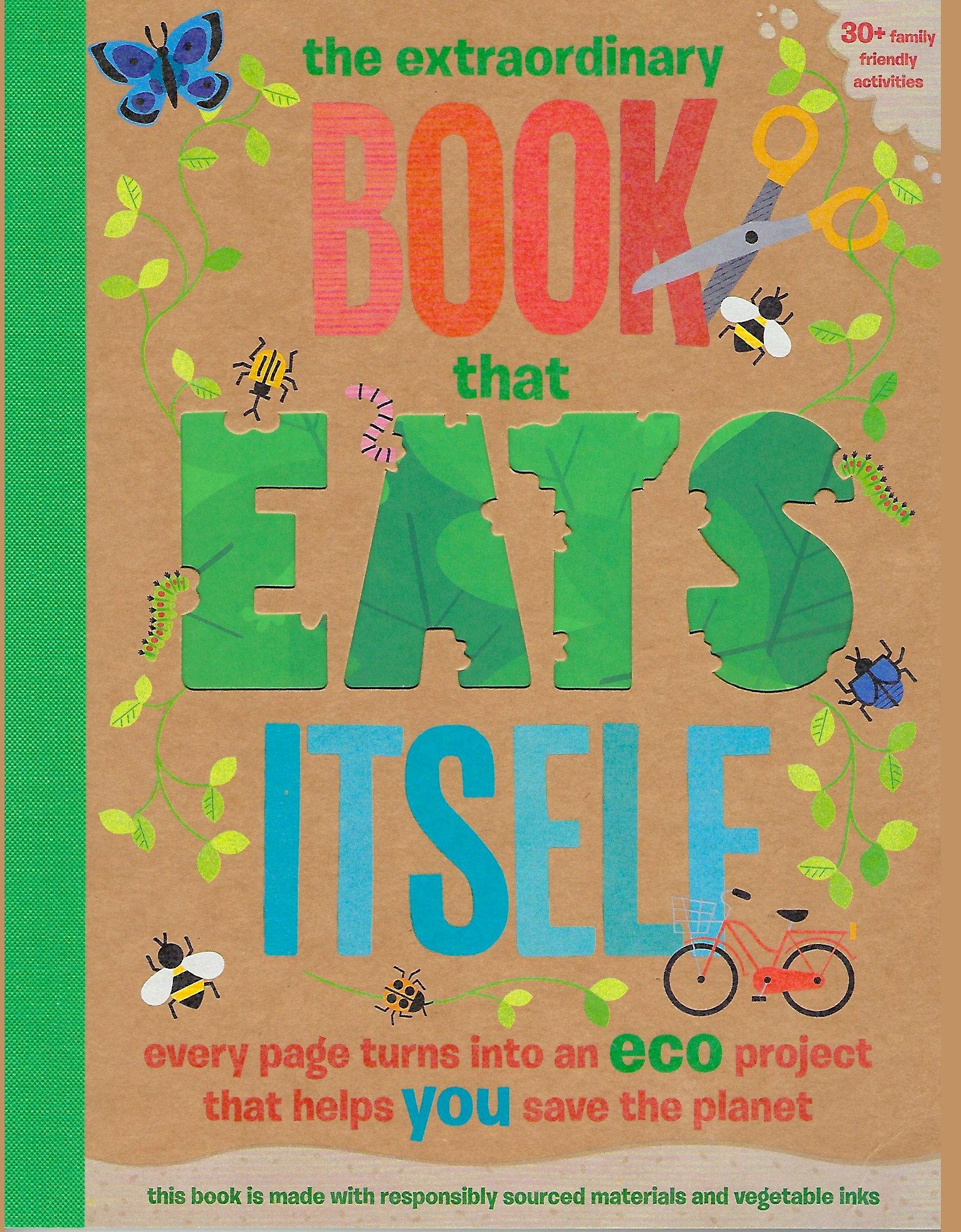Garden and Nature Gift Book Ideas for Children and Grandchildren
Robin Schachat
This year’s selection is a mix of read-alouds for the youngest and nature lessons for older children, and we begin with a craft and fun book that recycles itself into projects for 9-13 year olds.
The Extraordinary Book that Eats Itself is a joyous romp through 30 projects that children can create by cutting up its pages and transforming them into eco-projects. There are games, toys, rafts, recipes – all sorts of fun ideas! One page is a template that, cut and pasted, becomes a trumpet! One makes a bug hotel. Others become challenge games for parties of children, teaching them how to locate and disable energy vampires, reduce plastic use, and plant trees. And, once the challenges and games are over, there is nothing left of the book – it has all been transformed into toys and games. What a great way to encourage learning!
Watercress, by Andrea Wang, tells the story of a family driving in the countryside of Ohio. They stop suddenly and gather fresh watercress from a stream. The young daughter, our narrator, feels shame: “Free is bad. Free is hand-me-down clothes and roadside trash-heap furniture and now, dinner from a ditch.” But on this day she learns a lot about her family, about nature, and about home. It’s beautifully illustrated by Caldecott honoree Jason Chin, and tells a valuable topic rarely addressed in children’s books.
This year one of my favorite adult authors writing about trees, Peter Wohlleben, has a pleasant children’s book to offer, Peter and the Tree Children. A caveat – it’s good, but his adult writings are better. A forester named Peter and his squirrel friend named Piet set out to find happy tree children. They are not in the agricultural fields, nor in the clear cuttings nor new mass plantings. Finally, they are found where Piet buried beechnuts in the fall and forgot where he had hidden them. They have flourished as a family group in a forest glade full of birds and butterflies.
Do you recall alphabet books, where each letter was illustrated by something that had commonality with the other items in the book, like “A is for ant and B is for bumblebee…”? Compost Stew is a brand new alphabet book of items to mix to create compost stew! Apple cores to Laundry Lint, Teabags to Zinnia heads, they all come together to brew compost stew! It could lead to all sorts of guessing games and good habits in the garden as well.
The Keeper of the Wild Words by author Brooke Smith and illustrator Madeline Kloepper is a truly wonderful “day spent in nature book” that was inspired by the Oxford Junior Dictionary’s dropping of words from nature – wren, doe, buttercup, monarch, poppies – presumably because these words no longer have relevance in children’s lives. Grandmother Mimi (brown-haired and active, it is nice to see) teaches her grandchild, on a long walk, the reality behind the wild words that are being lost, and anoints her as their official Keeper. I get the impression this is only the first such walk and word list they will enjoy together! For a word-lover like me, this is a truly great book.
If you know little ones who love exuberant color, Shawn Harris’s Have You Ever Seen a Flower may be a good choice for them. Have you ever seen a flower just with your nose? Have you ever been a flower? This one is just rambunctious with color.
Another of this year’s cute books, the paperback In a Nutshell by Joseph Anthony, tells the story of an acorn that struggles and grows over centuries into a magnificent tree – and then crashes down in a storm, to rejoin and nourish the earth in which new trees will grow. This is an easy little read-aloud book for younger children – perhaps ages 3 to 5 – to introduce the concept of life, death, and regeneration.
Finally, my favorite for this year is The Tree in Me, written and illustrated by Corinna Luyken. You should look through this one for yourself; it’s a gem that defines what a tree is to a child – part shade, the sky, part orange-pear-apple-plum. And what that child is, because of the trees within. “Because there is a tree in me there is wind, and rain, and dirt, and a river with fish.…” Really lovely.







